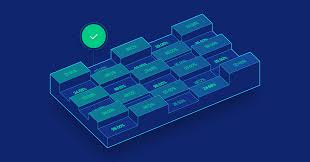3D product modeling is essential in modern product development, design, and marketing. It enables stakeholders to experience and comprehend product designs visually, saves time and costs associated with physical prototyping, and facilitates virtual testing and simulation.
Product modeling in 3D can be a powerful tool that enhances efficiency, improves communication, and drives innovation in product development. It has revolutionized the way companies conceptualize and visualize their products. It has become essential for various industries, from architecture and engineering to advertising and entertainment.
Whether you’re a budding entrepreneur or an established organization, harnessing the power of 3D product modeling can significantly improve your design process.
However, before diving into the world of 3D product modeling, it is crucial to conduct a comprehensive requirement analysis. To initiate a successful project, let’s explore the critical steps in conducting requirement analysis for 3D product modeling services.
1. Understanding the Importance of Requirement Analysis
Requirement analysis serves as the foundation for any 3D product modeling project. It ensures a clear understanding of the client’s expectations, objectives, and constraints. You can establish a roadmap for the project, align the stakeholders’ vision, and mitigate potential risks by conducting a thorough requirement analysis. This analysis acts as a blueprint for the 3D product modeling services and sets the stage for creating an accurate and visually stunning representation of the product.
2. Identify Project Goals and Objectives
The first step in requirement analysis is to identify and define the project goals and objectives. This involves understanding the purpose of 3D product modeling, whether for marketing, prototyping, or visual storytelling. You can set realistic expectations and ensure the project remains focused throughout its execution by clearly defining the goals.
3. Define Target Audience
To create a compelling 3D product model, it is essential to identify the target audience. Understanding the intended viewers’ demographics, preferences, and needs will help tailor the design and animation elements accordingly. Whether you are targeting customers, investors, or internal stakeholders, their requirements and expectations should be considered during the requirement analysis phase.
4. Gather Product Information
In order to accurately do product modeling in 3D, it is crucial to gather comprehensive product information. This includes technical specifications, dimensions, materials, color schemes, and other relevant details. Collaborate closely with the product development team or subject matter experts to ensure that all necessary information is gathered during this stage.
5. Determine Functional and Aesthetic Requirements
Next, it is essential to determine the functional and aesthetic requirements of the 3D product model. Functional requirements include the product’s intended usage, interactive features, and any specific animations required. Aesthetic requirements encompass the desired visual style, branding elements, and overall look and feel of the model. Balancing these two aspects is crucial for creating a compelling and functional 3D product model.
6. Consider Technical Constraints
During the requirement analysis, it is vital to consider the technical constraints that may impact the 3D product modeling process. This includes software compatibility, hardware limitations, file formats, and rendering capabilities. You should address these constraints early to ensure a smooth workflow and avoid potential setbacks during the project execution.
7. Collaborate with 3D Animation Studios or Experts
Consulting with an expert 3D animation studio or experts is valuable for 3D product modeling. They have expertise that can help streamline the requirement analysis process and offer valuable insights into best practices and industry standards. You can partner with professionals specializing in product modeling in 3D, leverage their expertise, and ensure a high-quality outcome.
In Summary
Conducting a thorough requirement analysis is crucial in initiating a successful 3D product modeling project. You must understand the project goals, define the target audience, gather comprehensive product information, determine functional and aesthetic requirements, consider technical constraints, and collaborate with 3D animation studios or experts; it can help set a solid foundation for creating accurate and realistic 3D product models. Lets rack your brain and leverage the power of 3D product modeling services to open up new opportunities and take your product development to greater heights.






